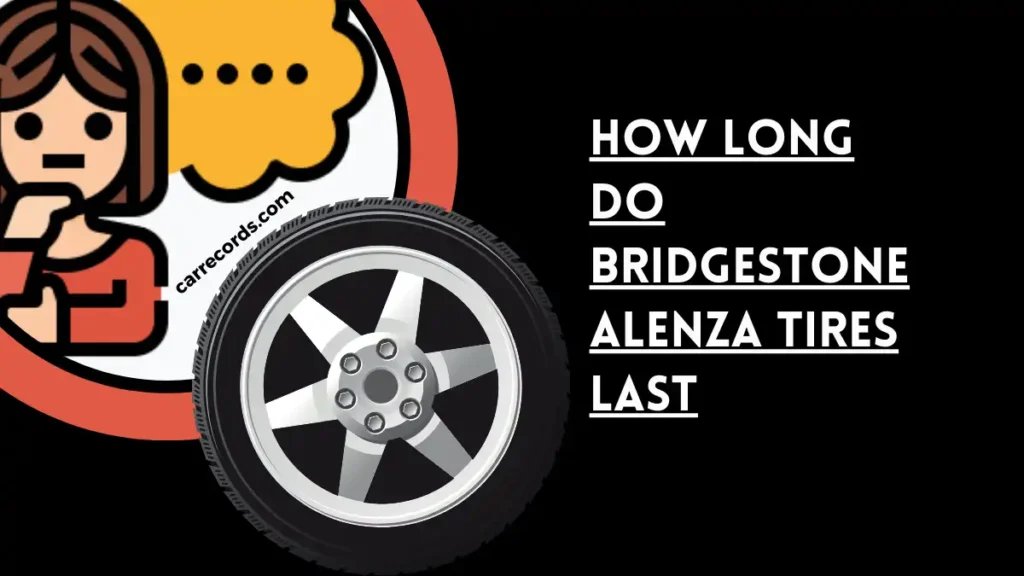✔️ how long bridgestone tires last ?
Bridgestone tires can endure for about three to five years, considering an annual mileage of 12,000 to 15,000 miles. However, factors such as maintenance, driving habits, and conditions play a vital role. The National Highway Transportation Safety Administration (NHTSA) recommends replacing tires after six years to ensure safety.
Bridgestone, one of the leading tire manufacturers globally, is known for producing safe, durable, and high-quality tires. As a vehicle owner, understanding the lifespan of your tires is crucial for both safety and budget considerations.
Factors Influencing Tire Lifespan:
Usage Patterns and Tread Depth:
The longevity of Bridgestone tires is significantly affected by driving habits and tread depth. Tread depth plays a vital role in maintaining traction, especially in adverse weather conditions. Tires with less than 2/32″ tread depth are considered unsafe and should be replaced. However, it’s important to note that even minimally used tires, like those on recreational vehicles or collectible cars, can experience aging due to a lack of driving, affecting their structural integrity.
Road Hazards:
Driving conditions impact tire wear. Hitting curbs, potholes, and other road hazards can lead to misalignment and suspension damage, accelerating tire wear. Regular suspension, alignment, and tire checks are essential, especially for drivers navigating challenging road conditions.
Weather Conditions:
Adverse weather conditions, such as snow, ice, and rain, can accelerate tire wear as tires work harder to maintain traction. Opting for tires engineered for specific weather conditions can enhance safety and extend tread life. Bridgestone offers a range of tires designed to perform well in various weather and road conditions.
Driving Habits:
Aggressive driving behaviors, like quick acceleration, hard cornering, and sudden braking, increase tire stress and lead to rapid wear. Practicing smooth driving habits can significantly extend tire lifespan.
Neglected Maintenance:
Regular tire maintenance, including checks for damage, proper air pressure, and alignment, is crucial for maximizing tire lifespan. Without proper upkeep, tire life can be reduced by half or more.

Knowing When to Replace Tires:
- Low Tread Depth: Tread depth is a visible indicator of tire wear. Different wear patterns can indicate alignment issues, under-inflation, over-inflation, or suspension problems. The penny test is a simple way to assess tread depth.
- Rough Drive: Vibrations and increased tire noise suggest balance, wear, or structural issues. Prompt professional inspection is crucial to ensure safety.
- DOT Number: The Department of Transportation (DOT) number on the tire sidewall indicates the tire’s manufacturing date. Tires made after 2000 have a four-digit code representing the week and year of manufacture. Tires made before 2000 should be replaced due to age.
- Manufacturer Recommendations: Bridgestone recommends replacing its tires after ten years, regardless of tread depth. Regular inspections by qualified technicians are advised to identify signs of damage or misuse.
Extending Tire Lifespan:
- Gentle Driving: Avoiding hard braking, aggressive acceleration, and sharp corners reduces stress on tires and extends their lifespan.
- Regular Maintenance: Frequent checks of air pressure and tread depth, along with professional balance, alignment, and rotation, enhance tire performance and longevity.
Different Bridgestone Tire Types and Lifespan:
- Dueler Tires: Bridgestone’s Dueler light/medium truck tires offer various mileage ranges. The Dueler H/L Alenza, a leader in this category, lasts around 80,000 miles, while other models range between 40,000 and 60,000 miles.
- Potenza Tires: Potenza performance tires have different lifespans. The Potenza RE980AS and RE980AS Plus offer 50,000-mile tread warranties, while other models lack warranties.
- Turanza Tires: The Turanza QuietTrack touring tire is cost-effective, lasting up to 80,000 miles with proper conditions.
- Blizzak Tires: Bridgestone’s winter tire line, Blizzak, has a lifespan of around 12,000 to 15,000 miles.
- Ecopia Tires: Ecopia passenger tires, including the H/L 422 Plus and EP422 Plus models, last about 50,000 miles.
Bridgestone Tires vs. Other Brands:
While Bridgestone offers durable and long-lasting tires, their longevity is influenced by usage patterns and maintenance. Bridgestone’s Dueler H/L Alenza Plus, Turanza QuietTrack, and Alenza As Ultra are highly durable, but the NHTSA recommends tire replacement after six years regardless of brand or model.
Conclusion:
Bridgestone tires are renowned for their safety, quality, and durability. Understanding factors affecting tire lifespan, such as usage patterns, maintenance, and specific models, is essential for making informed decisions about tire replacement.
While Bridgestone offers tires with varying lifespans, regular maintenance and adopting gentle driving habits are key to extending tire longevity. As a vehicle owner, prioritize safety by following manufacturer recommendations, conducting regular inspections, and replacing tires when needed, ensuring a comfortable and secure driving experience.

